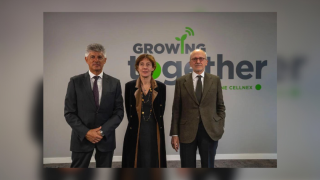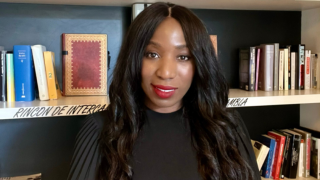José Manuel Aisa, CFO of the tower owner Cellnex Telecom, says he has “been involved with M&A all my life”. But he was also involved in one of the telecom industry’s biggest demergers, when, in 2015, Spanish motorway company Abertis spun off its telecoms operation as Cellnex.
Aisa spent four years at the parent company of the La Caixa banking group, before joining Abertis in 2003. Eleven years later, when Abertis Telecom Terrestre was preparing to become Cellnex Telecom, Aisa says he “decided to join this adventure”.
In its initial public offering, Cellnex shares were valued at €3.5 billion. Seven years later, the company’s market cap on the Madrid stock exchange is €26.7 billion. Aisa says Cellnex is now “a big, beautiful company” that is “very different” from Abertis.
Corporate entrepreneur
“I became a CFO at Cellnex, not before,” he says on a call from Barcelona, where the company is based.
When he joined what was to become Cellnex, “it was linked to a big group, and we had to build [the separate business]”. That meant developing teams that looked after investor relations, finance and M&A. “It has been an adventure in corporate entrepreneurship, and I have been very happy,” he says.
Fortunately, he was able to bring colleagues over from Abertis to lead those units. “I discovered so many valuable people in the team,” he says, but he “started to think how we could change the pieces – new pieces, new colours – to get a structure that made sense”.
“I was lucky enough to have people who were open to change. I learned to listen a lot,” he recalls.
At the same time, Aisa had to “triangulate with the boss and consult with the board”, so he became “an ambassador for the team with the board and the stakeholders”.
Aisa says he sees a CFO as “a stakeholder who must understand the shareholders, the stock exchange, and the corporate governance of the company”. He adds: “The CFO must give service to the business and must help the business to see what is going on. The business is the number one.”
Abertis created Cellnex at a time of growing interest in specialist tower infrastructure companies. Since Cellnex was formed, operators have separated out, often selling their tower divisions, and independent tower companies have consolidated to gain efficiencies.
Across Europe
Cellnex now has business in 12 European countries, from Austria to the UK. It has 71,000 telecoms and broadcasting towers in its portfolio, and is in the process of acquiring 57,000 more to 2030.
This investment is particularly important as the industry upgrades from 4G to 5G, says Aisa. The increase of applications that need the low latency offered by 5G, such as autonomous cars, means “we will need more infrastructure. That is key. The physics of latency is clear.”
For Aisa, this required a sharp shift in outlook. Abertis is a motorway company with long-term stability, going back to the 1970s, he smiles. But at Cellnex, “we have to be nimble” – although he points out that there is no direct translation of “nimble” in Spanish. Various dictionaries offer “ágil ” – “agile” – but that clearly is not enough. And then there was the task of learning from results, he says.
With a few exceptions, such as Blackrock with around 5%, Aisa says “the vast majority” of shareholdings in Cellnex has changed since its demerger and IPO, says Aisa.
According to records, the largest shareholder is currently Edizione, the Benetton family’s investment arm, with 8.5%, followed by several at around 5%.
Money to build up
“I’m in the back office, which is huge,” Aisa says. “We are in everything.”
Aisa says his day-to-day work is dominated by ensuring there is money available “to build up the platform”, to allow Cellnex’s deputy CEO to seek out new M&A opportunities to expand the business.
The second main demand on his time is working with the chief executive to talk with investors and others, in order “to understand the issues and propose solutions”.
At the same time, he says, he needs to stay “in contact with the team, networking, and helping the business as much as I can. If we see a country [in the Cellnex portfolio] that is not developing as it should, we try to help. Should we spend less or more?”
“It is like a kitchen,” Aisa says. He is “the one who cooks”. And like a good head chef, he ensures that “all the machinery that is not seen” runs smoothly and stays consistent, while others present the food to the customers.
“We like to keep coherence,” he says. “Everything must be coherent at the end of the day.”






